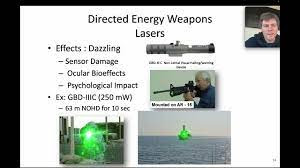Patent No. 3884218 Method of inducing and maintaining various stages of sleep in the human being
Patent No. 3884218 Method of inducing and maintaining various stages of sleep in the human being (Monroe, Sep 30, 1970)
Abstract
A method of inducing sleep in a human being wherein an audio signal is generated comprising a familiar pleasing repetitive sound modulated by an EEG sleep pattern. The volume of the audio signal is adjusted to overcome the ambient noise and a subject can select a familiar repetitive sound most pleasing to himself.
Notes:
BACKGROUND
OF THE INVENTION
1. Field of the Invention
This invention relates to a method of inducing sleep in a human being, and more
particularly, to a method of inducing sleep by the generation of audio signals
which are produced by the modulation of familiar repetitive noises with electroencephalographic
(EEG) sleep patterns.
2. Description of the Prior Art
The use of audio generators to induce sleep is well known in the prior art,
as exemplified by U.S. Pat. Nos. 2,711,165 and 3,384,074. The audio signals
used include pleasing and harmonious steady sounds or vibrations, fixed frequency
signals which are cyclicly varied as to amplitude, and repetitive sounds such
as the falling of rain on a roof and the sighing wind through the trees.
The prior art also discloses, in U.S. Pat. No. 3,304,095, a method for inducing
sleep by the generation of an audible or tactual signal which is related to
the physiological processes of heartbeat and respiration. In this method, the
pitch and amplitude of a pleasing audio signal are varied at a rate somewhat
slower than either the rate of heartbeat or respiration. The heartbeat and respiration
will tend to synchronize with the audio signal thereby lowering the heartbeat
and respiration rate and inducing sleep.
SUMMARY OF THE INVENTION
The present invention comprises a method for inducing sleep wherein familiar,
repetitive, pleasing sounds are modulated by predetermined EEG sleep signals
to produce an audio signal which induces various stages of sleep.
It has been found through the use of an EEG that various patterns of electrical
activity are associated with different states of consciousness. There are two
primary states, waking and sleeping. Within the waking state, there are various
degrees of alertness ranging from frantichyperalertness through relaxed attentiveness
to drowsiness. There are also several stages of sleep ranging from a light to
deep. All of the various states of alertness and sleep have EEG patterns which
are characteristic of the state. These patterns tend to be basically similar
for all normal human beings. It is well known in the prior art, as set forth
above, that familiar, repetitive, pleasing sounds tend to produce drowsiness
and sleep in an individual. In the method of this invention, however, the pleasing
sounds are combined with the EEG sleep patterns by modulating the former with
the latter. The audio signal thereby produced has been found to be a quick and
efficient sleep inducing signal. In the method of this invention, the individual
has the opportunity of selecting a signal most pleasing to himself for inducing
sleep, and furthermore, he may determine the level of the sleep inducing signal
in order to overcome ambient noise conditions.
In addition, the subject may time the sleep inducing signal such that upon completion
of a predetermined time period the signal will stop and, he will drift back
to wakefulness.
--------------------------
It has been found that sleep can be maintained by maintaining the presence of
the audio signal and that awakeness may be induced by stopping the audio generator.
Therefore, an individual may determine the time which he sleeps by setting a
timer which will automatically turn off the sound generator and thereby return
him to a state of consciousness.
While the invention has been particularly shown and described with reference
to the preferred embodiments thereof, it will be understood by those skilled
in the art that various changes in form and details may be made therein without
departing from the spirit and the scope of the invention.




Comments